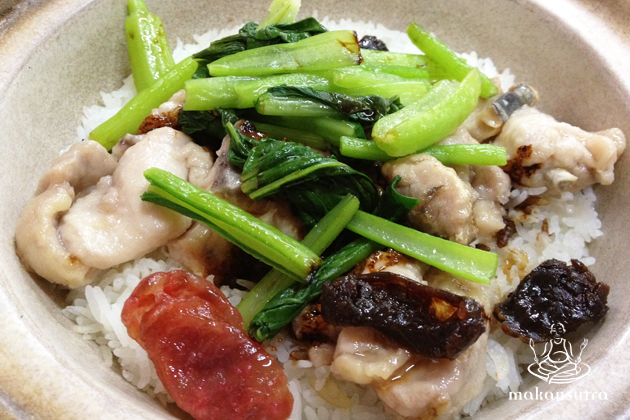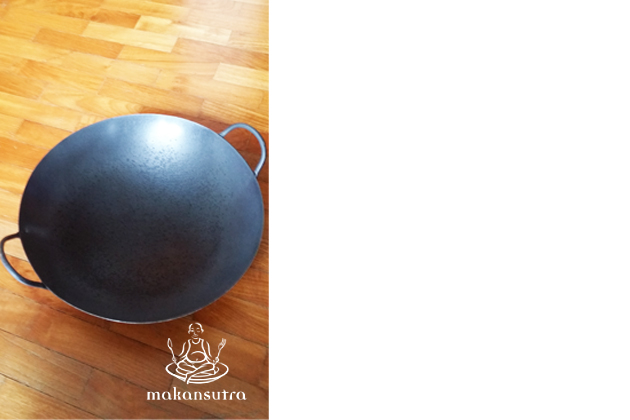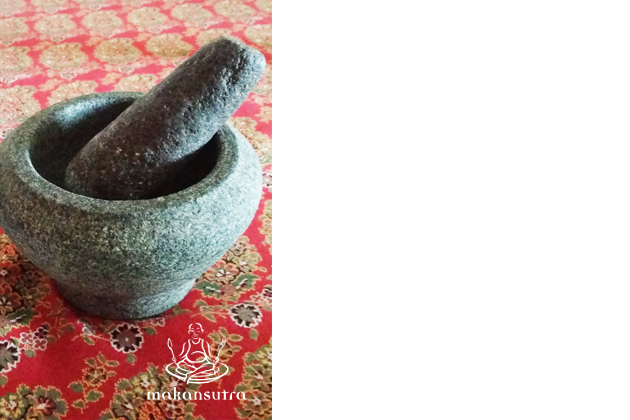
Why Old Kitchen Tools Never Die
By Shoba Nair - Tuesday, Mar 24, 2015
If you have tried to duplicate the flavours of street food, are convinced that you have all the right ingredients and the skills of a master hawker, it could puzzle you when your dish just doesn’t quite taste the same. The reason could be the most unsuspecting one – the cooking tool.
There is a synergy between the humble cooking tool and the ingredients twirling in it, paving the way for a flavourful (or bland) dish.
We take a look at three traditional tools used by street-food experts.
If you observe your local hawker toiling away to whip up your Char Kway Teow or fried carrot cake, you would not miss the large black wok sitting on his stove.
The origin of the wok can be traced back to the Han Dynasty (221-207 BC), although it was not until the Ming Dynasty in 20th century China that it was used more for cooking. At an age when traditional cooking techniques were mainly boiling and steaming, stir frying, and therefore the round-bottomed wok, started to gain popularity only when oil became affordable to the commoner (Anderson, E.N, 1998. The Food of China). With that, the fame of the wok spread beyond China. The Indians have even named food after the wok (known as kadai in some parts of India) such as kadai paneer and kadai chicken.
The most favoured method of Chinese cooking on a wok is to cook on high heat as this enables the food to have a smoky and singed flavour, thus delivering your wok hei (referring to the “essence” imparted by a hot seasoned wok on food ) Char Kway Teow dish. The high heat removes the steam and moisture in the food, thus ensuring that the food is crisp without overcooking the interior.

Although the traditional wok is made of cast iron, the most common type of wok used today is the carbon-steel wok, favoured for its non-rusting nature, its low weight and its ability to ensure even heating. Non-stick woks may be all the rage now, but you would not see any hawker using it, and for good reason too. Not only is it much more expensive, it is not advisable to use non-stick woks for high-heat cooking as the extreme heat would disintegrate the non-stick coating, and cause the resulting chemicals to mix with the food. And, do not expect to obtain the ‘oomph’ taste here either, as the seasoning of the classic iron or carbon-steel wok over time, which enhances the flavour of the food, would be conspicuously missing.
Say claypot, and I think of claypot chicken, one of my most favourite local foods.
If we try to explore the country of origin of claypot cooking, we may be pointing in many directions around the world. Claypot cooking was in the shadows of newly-introduced metal utensils for a while, but claypots have made a huge comeback, with more realising the distinctive flavour of claypot-cooked food.

The slow-cooking process ensures that a rich, intense flavour of the sauces mixing with the juices of the ingredients results. The porous claypot also lends an earthiness to the food prepared, which cannot otherwise be enjoyed with metal utensils. Not surprisingly, the steam trapped within the pot ensures that the pieces of meat are also tender; hence, your succulent pieces of chicken in claypot chicken rice. Claypots are also used by traditional Peranakan and Indian cooks who swear that making lembu rendang (slow-cooked beef cheek rendang in claypot) or cooking fish curry in a claypot brings out the unique and authentic flavour of the combined spices in the dish.
I grew up hearing the pounds of the pestle against the mortar every morning, not just in my house but also in the houses above my JTC apartment block.
This tool, the only one out of the three which is literally not on fire, is synonymous with Peranakan, Malay and Indian cooking.
The mortar and pestle, typically made of stone, is used for crushing and grinding spices and grains. In Peranakan cooking, the all-important “rempah” (a combination of spices) is traditionally pounded using the mortar and pestle. The Malay cooks pound their chillies with belachan using this tool too, to make sambal belachan. As for the Indians, they ground spices to make curry paste and even use the bigger version of the tool to ground the soaked rice and urad daal (a type of lentil) to make the thosai batter.

Today some commercial cooks (and many home-cooks) are increasingly turning to blenders to grind the ingredients together, as this certainly makes for less manual labour. However, the resulting food may not deliver the full, authentic taste. Pounding the spices together slowly and skillfully, bit by bit, renders a greater breadth and depth of flavour; that may be something a blender, with its high-speed turns, may fail to do.
Tradition does have its reasons, and traditional tools serve an indispensable purpose. Our taste buds do deserve better.


